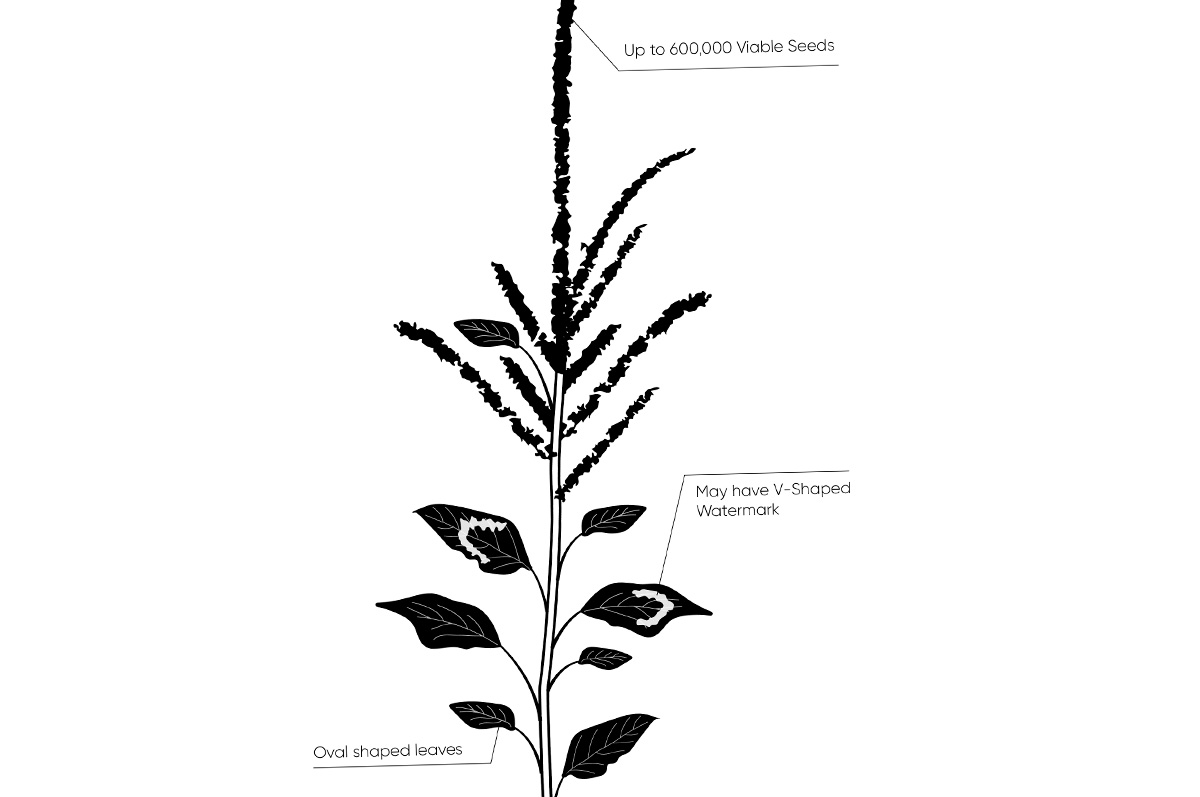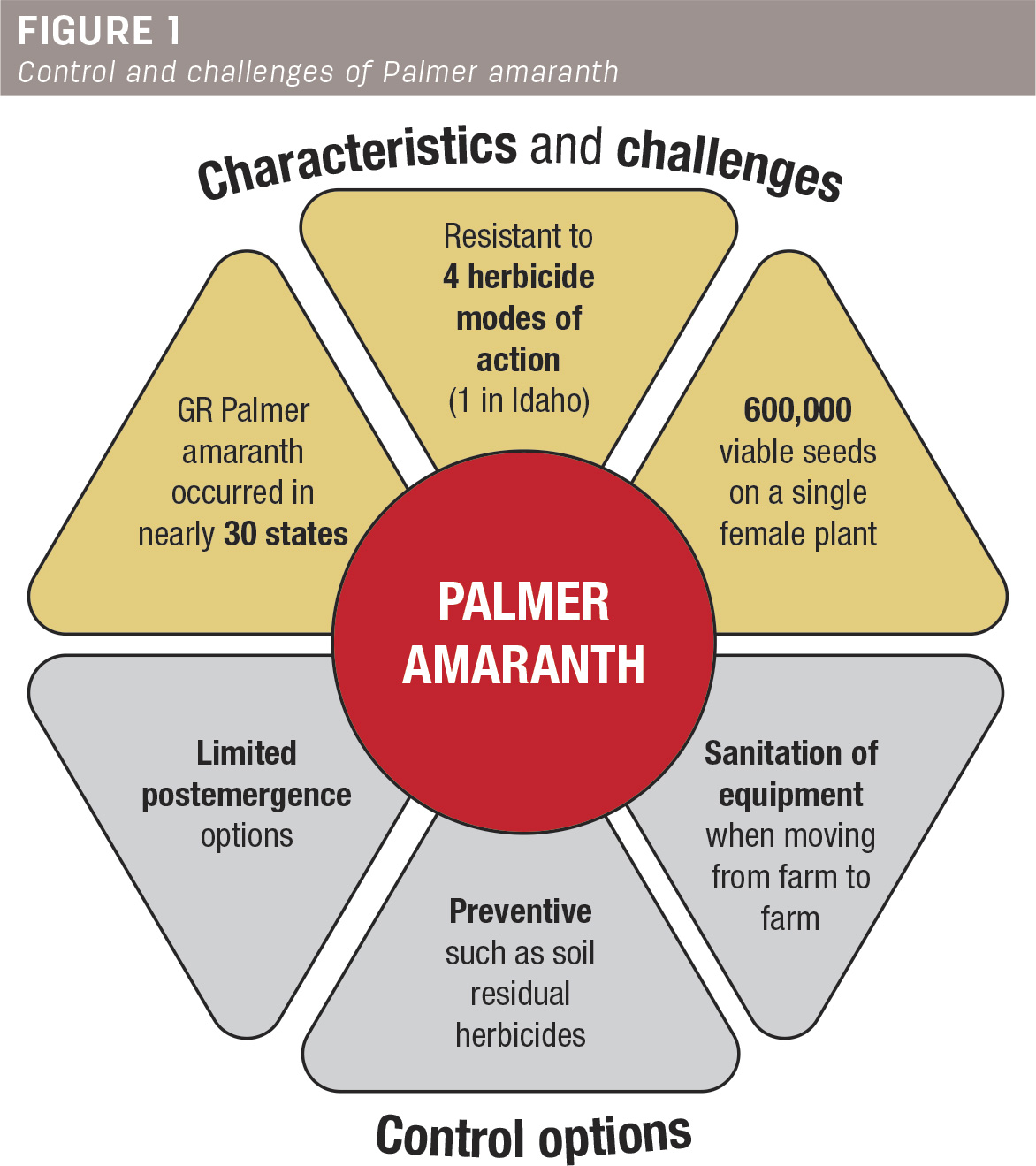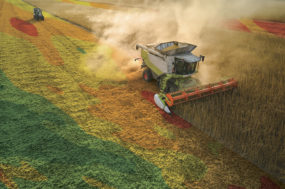Every farming season brings us new challenges, and 2023 brought us glyphosate-resistant (GR) Palmer amaranth, a new type of pigweed in Idaho. The ramifications of identifying GR Palmer amaranth have the potential to alter current cropping systems in Idaho. If left unaddressed, it could change the way we grow crops in the future.
My career in agriculture started at a very young age farming and progressed to earning a Ph.D. in weed science through Mississippi State University. Although GR Palmer amaranth may be new to Idaho, the southeastern U.S. has been dealing with GR Palmer Amaranth for almost two decades. I have worked with Palmer amaranth extensively over the last decade and how to control it in multiple cropping systems. For most of my career in agriculture, Palmer amaranth has been the weed that all herbicide programs are designed around.
Characteristics and challenges
Palmer amaranth was first documented as GR in 2005 in Macon County, Georgia. After it was identified in Georgia, Palmer amaranth control failures with glyphosate have occurred in nearly 30 states, most recently Idaho.
Palmer amaranth is native to the southwestern region of the U.S. and can grow up to 7 feet in height. It has oval-shaped leaves, petioles as long or longer than the leaf blade, green or reddish stem and can have a white V-shaped watermark on the leaves. Palmer amaranth has both male and female plants. Flowers are located on separate plants and are often long, narrow and complex. They can have singular or multiple seedheads, and seedheads usually are dropping on older plants. Female plants can be identified by sharp bracts on the terminal inflorescence.

Palmer amaranth is a prolific seed producer, with a single female plant capable of producing up to 600,000 viable seeds without competition. Compared with waterhemp, redroot pigweed and spiny amaranth, Palmer amaranth has the largest plant volume and leaf area. Since the first documentation of herbicide resistance in Palmer amaranth to the dinitroaniline herbicide family, it has developed resistance to several herbicide modes of action, including acetolactate synthesis inhibitors (ALS), EPSP synthase inhibitors, 4-hydroxyphenylpyruvate dioxygenase inhibitors (HPPD), auxin mimic and photosystem II inhibitors (PSII).
In recent years, Palmer amaranth has become one of the most problematic weeds for growers. Palmer amaranth is mainly troublesome due to its competition with crops for light, water, nutrients and space. Additionally, it can tolerate extremely adverse conditions. Because of these factors, many leading chemical companies are developing their new herbicide technologies utilizing GR Palmer amaranth as the driver weed.
Control options
Although GR Palmer amaranth is a new and invasive species to Idaho, many of the current residual control options in potatoes and sugarbeets are staples in controlling GR Palmer amaranth across the country, including pendimethalin, metribuzin, s-metolachlor and pyroxasulfone. However, postemergence GR Palmer amaranth control options in these crops are very limited. Therefore, an aggressive residual herbicide program containing multiple herbicide modes of action (MOA) will be paramount in controlling GR Palmer amaranth.
Research and field applications commonly suggest that the most effective and economical techniques for GR Palmer amaranth control were those that were preventative, such as the use of soil residual herbicides. Incorporation of pre-herbicides followed by post-application herbicide systems should be utilized when managing GR Palmer amaranth. Chemical means of control are the most effective; however, a total management program consisting of mechanical, cultural, chemical and physical control options is necessary to control Palmer amaranth. Scouting, crop and herbicide MOA rotation, and other cultural practices are all paramount in a total program approach to control GR Palmer amaranth. Additionally, due to the weed's prolific nature, it's highly recommended to sanitize equipment thoroughly from farm to farm to minimize spread.

Be proactive, not reactive
Looking at the southern U.S., history has shown that achieving 95% control is insufficient for effectively managing Palmer amaranth. There is no silver bullet answer; however, a total management program is required for effective pest control and containment. Keep in mind that no matter how well a GR Palmer amaranth management program is on a particular farm, infestations can occur from several sources including neighboring property, ditchbank and equipment transportation. If you think it's resistant, it probably is. Be proactive with GR Palmer amaranth, not reactive.
In instances where resistance is suspected, cases should be reported to the local county extension center and controlled immediately. If you have any questions about developing a plan or managing GR Palmer amaranth, please reach out.
Ben Lawrence's current role is as a senior agronomist for Simplot Grower Solutions on the Agronomy Sales Enablement Team in Louisiana and southern Arkansas, a role in which he helps crops advisers and growers make the best agronomic decisions for their farming operations. He specializes in weed control in row crops with an emphasis on those crops grown in the southeastern U.S.
.jpg?t=1713198780&width=1080)

.jpg?t=1687979285&width=640)





